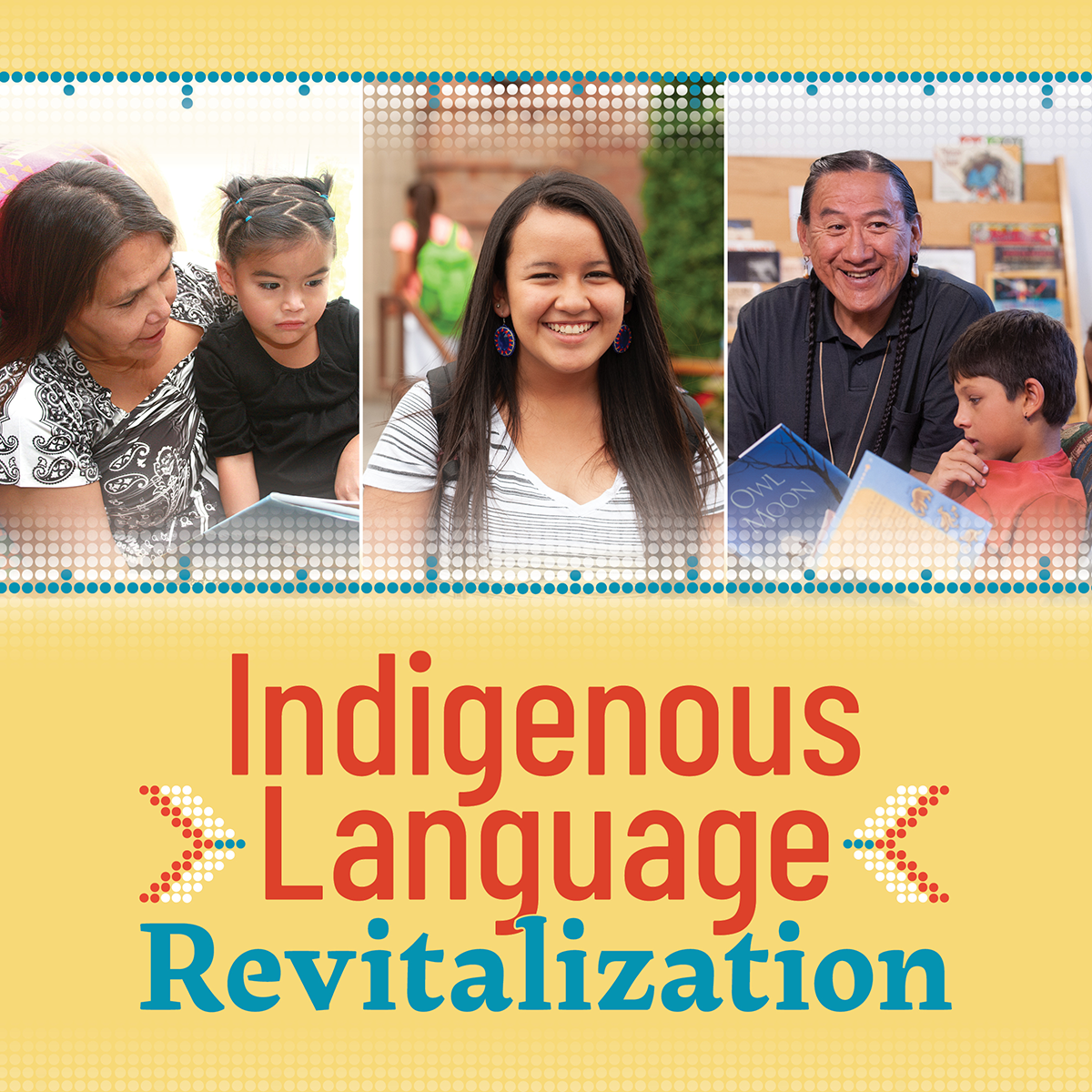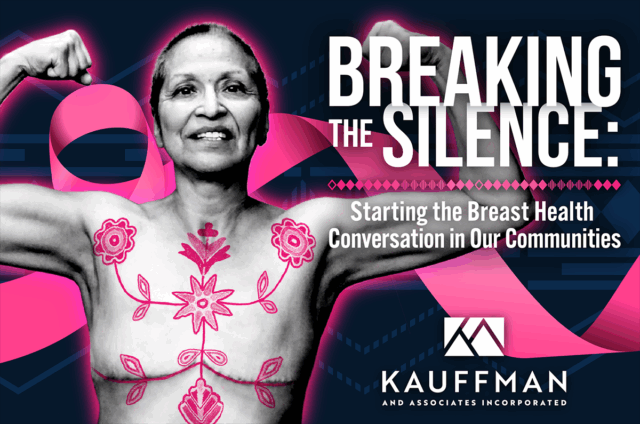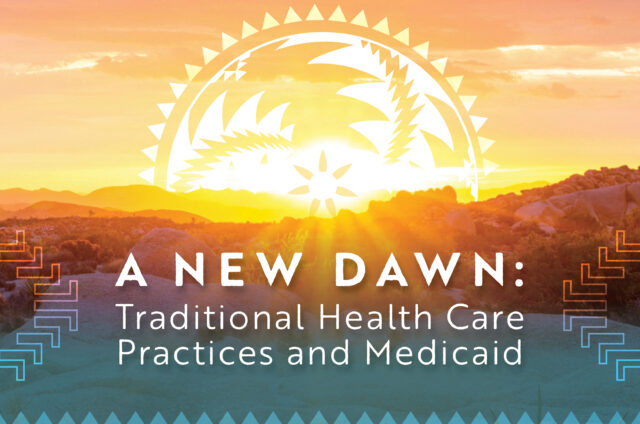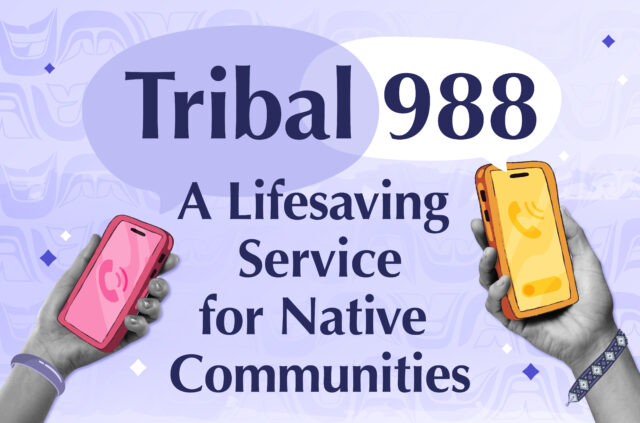In communities across North America, there is renewed hope that our Indigenous languages can be preserved and revitalized, and there is strong consensus that our languages are the key to maintaining cultural and community identity. Unfortunately, most Indigenous language communities continue to suffer a net loss of fluent speakers due to the passing of our first-language elders and the challenge of training new speakers. In this time of new hope and continued loss, the work being done at Salish School of Spokane (SSOS) shows that, yes, our endangered Indigenous languages can be revitalized, and the time to do that, is now!
Indigenous Language Endangerment
Every Indigenous nation in North America honors its traditional language and wants to revitalize it. Most Indigenous community members have some connection to their Indigenous language, by still speaking it, by knowing some words, or by holding a sense of its sacredness even if it has been lost from daily life. Nearly every tribe in the United States has some kind of language preservation program ranging from small, one or two-person programs, to significantly larger programs. There are also many Native nonprofit organizations working to preserve and revitalize Indigenous languages through grass-roots community work.

All these efforts are staffed by hard-working, dedicated culture bearers who deeply value their Indigenous languages. Tribal language programs and nonprofits are creating, implementing, and using various approaches and teaching methodologies in attempts to stem the tide of language loss. Unfortunately, most of these efforts are not achieving their goal of stopping the loss of fluent speaker.
The lack of success in language revitalization is driven by an overinvestment in community language services and an underinvestment in language revitalization work. Community language services are often ad hoc, short term, and improvised activities that tribes and nonprofits engage in as they attempt to save their languages. But, even as part of a community language plan, these services are not producing new advanced speakers and tend to be project-based- they produce some materials, hold some classes, and send teachers into classrooms. By contrast, language revitalization work focuses on training new, advanced fluent speakers who are grounded in culture and empowered to engage in intergenerational use and transmission of the language.

The approaches used for language revitalization are community-specific and informed by an honest understanding of the level of endangerment of the language. For critically endangered language communities, that means highly focused work to train new adult speakers and bring them to advanced fluency. To achieve this, community language services often must be curtailed until there is a large new contingent of new advanced speakers who can transmit the language in families and serve as language teachers.
A Proven Model of Language Revitalization
The work happening atSalish School of Spokane (SSOS) is an example of this shift to effective language revitalization programming. The mission of SSOS is: Dynamic Salish Language Revitalizationpowering cultural renewal and building a stronger, healthier community. To achieve it mission, SSOS is pursuing dual language revitalization strategies: 1) training new advanced adult speakers, and; 2) providing Salish immersion schooling for children. The language of instruction at SSOS is n̓səl̓xčin̓, Colville Salish. n̓səl̓xčin̓ is a critically endangered language with only two surviving fluent elders in the U.S. and perhaps another 25 in Canada. As a critically endangered language community, SSOS makes the training of new advanced fluent adults the number one priority. Success with this first strategy has then allowed SSOS to invest in n̓səl̓xčin̓ immersion schooling. For this 2025-26 school year, SSOS is training 27 adults in its Salish Language Educator Development (SLED) program, teaching 28 adults in its community evening classes, and serving 50 children from 1 year old to 8th grade with full-Salish immersion care and instruction.
SSOS been able to train so many new fluent adult speakers because their founders created an effective fluency transfer system before starting the school. The system development was lead by LaRae Wiley (Sinixt). In 2005, LaRae and her husband, Christopher Parkin, moved in with Elder Sʕamtíc̓aʔ (Sarah) Peterson so they could learn n̓səl̓xčin̓ through cultural immersion. But, LaRae and Chris also made a commitment to leave a trail that others could follow to learn n̓səl̓xčin̓. To boost their own fluency and to begin cutting that trail, they made extensive recordings with Sʕamtíc̓aʔ and carefully sequenced that material. Fast forward five years, and with Sʕamtíc̓aʔ, they had created the framework of the N̓səl̓xčin̓ Fluency Transfer System that powers the training of new fluent speakers at SSOS.
Indigenous Language Fluency Transfer System
LaRae and Chris’ work caught the attention of neighboring communities who asked them to share how they were becoming speakers of n̓səl̓xčin̓ so quickly. They began to share both their journey and the fluency transfer system template with other communities. Over time, they refined and developed the system into what they now call the Indigenous Language Fluency Transfer System (ILFTS).
The ILFST is a framework that can be used by any Indigenous language community as a tool for achieving language revitalization. It can be adapted to any language, culture, or ecology, and that is just what is happening. The ILFTS is being used by more than 30 language communities to power their own language revitalization programs. From the Children of the Taku in Yukon Territory to the Pertame School in Alice Springs, Australia, ILFTS is helping communities refocus their efforts on language revitalization and training new advanced fluent speakers.
From the beginning, LaRae and Christopher have been gifting the ILFTS to any Indigenous language community that would like to use it, and over the years, the demand for ILFTS training and technical support has grown. With many more communities joining the fledgling ILFTS network, it was time to increase support for communities.
In the summer of 2025, Indigenous Fluency Now (IFN) a British Columbia-based nonprofit was launched. The mission of IFN is to promote successful Indigenous language fluency and build a network of communities for implementing advanced Indigenous fluency transfer systems. IFN is already working with communities in Alaska, Yukon Territory, British Columbia, New Mexico, and Australia to help them implement localized versions of ILFTS.
Making the Shift
The ILFST developed by LaRae and Christopher for n̓səl̓xčin̓ has been the key to success for Salish School of Spokane. It has allowed them to double the number of advanced fluency speakersof their language and to have children once again grow up with n̓səl̓xčin̓ as a first language. The ILFTS is is one successful example of successful community language revitalization, but there are others- well organized and vigorous master-apprentice programs like the Yuchi Language Project in Oklahoma, and Snichím Foundation in Vancouver, BC. are also showing good results.
The examples of ILFTS and other successful programs serving critically endangered Indigenous language communities clearly show us a path forward—we must reduce investment in community language services that are not resulting in new advanced speakers. Instead, we must shift to deep investment in effective, proven language revitalization programming. If we do that, we will preserve and revitalize even our most endangered languages and ensure Indigenous Peoples can learn, speak, and teach their languages for generations to come.
Located in Spokane, Washington, Salish School of Spokane is a nonprofit dedicated to revitalizing four Southern Interior Salish languages, providing Salish immersion schooling for children, and teaching Salish to parents and other community members.
This post was provided by the Salish School of Spokane. The opinions offered are those of the authors and do not necessarily reflect the opinions of KAI nor its employees.



